-
Aging grid limiting exploitation of wind power potential
Energy firms and utility companies continue to invest in wind power, as evident in the increasing number of wind turbines on the prairies of the Midwest, but the aging infrastructure of the nation’s power grid is limiting the potential of this clean energy source.
-
-
Global warming threatens South American water supply: study
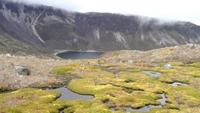
Chile and Argentina may face critical water storage issues due to rain-bearing westerly winds over South America’s Patagonian Ice-Field to moving south as a result of global warming.
-
-
Virtual nuke control room helps nuclear operators, industry
Modernizing nuclear power plants to help extend their operating lifetimes is no small task. The endeavor offers an opportunity to improve control-room design and layout. The Department of Energy’s new Human System Simulation Laboratory (HSSL) at Idaho National Laboratory (INL) is a full-scale virtual nuclear control room that can test the safety and reliability of proposed technology replacements before they are implemented in commercial nuclear control rooms. The facility is now helping Duke Energy embark on an upgrade project for several of its nuclear plant control rooms.
-
-
Assessing the risks of global aftershock
The entire world becomes an aftershock zone after a massive magnitude (M) 7 or larger earthquake — but what hazard does this pose around the planet? Researchers are working to extend their earthquake risk estimates over a global scale, as they become better at forecasting the impact of aftershocks at a local and regional level.
-
-
Mapping out an alternative energy future for New York
New York governor Andrew Cuomo will soon decide whether to approve hydraulic fracturing for natural gas in the state. To date, no alternative to expanded gas drilling has been proposed.A new study finds that it is technically and economically feasible to convert New York’s all-purpose energy infrastructure to one powered by wind, water, and sunlight (WWS).
-
-
Making storm warnings more exact, useful
The College of Staten Island (CSI)is the home of one of the most powerful mainframe computer systems in the country, an outgrowth of the City University of New York’s (CUNY) Decade of Science initiative. Following August 2011 Hurricane Irene, CSI scientistsset out to use that computing horsepower to generate scientific data hard enough to make the warnings something more than abstract. They fed millions of data points into the supercomputers, turning an admixture of geology, oceanography, climatology, and land surveys into a set of highly specific projections. Then, on 25 October 2012, Superstorm Sandy hit, and the actual water surges could be measured against the surge projections of the CSI model. On street after street, the computer model predicted flooding to within a foot of the actual surges.
-
-
Testing feasibility of deep geological storage of CO2 emissions
An injection of carbon dioxide, or CO2, has begun at a site in southeastern Washington to test deep geologic storage. Researchers are injecting 1,000 tons of CO2 one-half mile underground to see whether the greenhouse gas can be stored safely and permanently in ancient basalt flows. The United States and portions of Canada have enough potential capacity in geologic formations to store as much as 900 years of CO2 emissions.
-
-
SkySweeper robot inspects power lines easily, cheaply
Mechanical engineers invented a robot designed to scoot along utility lines, searching for damage and other problems that require repairs. Made of off-the-shelf electronics and plastic parts printed on an inexpensive 3D printer, the SkySweeper prototype could be scaled up for less than $1,000, making it significantly more economical than the two models of robots currently used to inspect power lines.
-
-
Next NIST workshop on critical infrastructure cybersecurity framework: Dallas, 11 September 2013
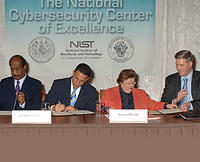
Registration is now open for the fourth in a series of workshops to bring together representatives from government, industry, and academia to establish a voluntary Cybersecurity Framework which will help reduce risks to critical infrastructure. The workshop will be held 11-13 September 2013, at the University of Texas at Dallas, and will be the final public session before the preliminary framework is formally released later this year.
-
-
Powering 1,000 homes would require using 32 acres for solar power plants
The Energy Department’s National Renewable Energy Laboratory (NREL) has published a report on the land use requirements of solar power plants based on actual land-use practices from existing solar facilities. Powering 1,000 homes would require setting aside 32 acres for solar power plants.
-
-
Man-induced quakes to help in building safer, sturdier buildings
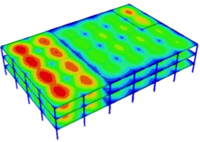
A team led by Johns Hopkins structural engineers is shaking up a building in the name of science and safety. Using massive moving platforms and an array of sensors and cameras, the researchers are trying to find out how well a two-story building made of cold-formed steel can stand up to a lab-generated Southern California quake.
-
-
Ten-fold increase in frequency of Katrina-magnitude storms this century
Tropical cyclones arise over warm ocean surfaces with strong evaporation and warming of the air. Since 1923, there has been a Katrina magnitude storm surge every twenty years. Researchers found that 0.4 degrees Celcius warming of the climate corresponds to a doubling of the frequency of extreme storm surges like the one following Hurricane Katrina. If the temperature rises an additional degree, the frequency will increase by 3-4 times, and if the global climate becomes two degrees warmer, there will be about ten times as many extreme storm surges.
-
-
Water reservoirs for hydroelectric dams are sources of greenhouse gas emissions
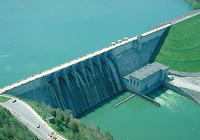
The large reservoirs of water behind the world’s 50,000 large dams are a known source of methane. Like carbon dioxide, methane is one of the greenhouse gases which trap heat near Earth’s surface and contribute to global warming. Methane, however, has a warming effect twenty-five times more powerful than carbon dioxide. The methane comes from organic matter in the sediments that accumulate behind dams.
-
-
Dams play an important role in water pollution control
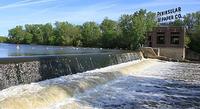
Small dams, reservoirs and ponds trap water pollution, which provides an important benefit to water resources. This is especially relevant in agricultural lands of the Midwest U.S., where there are lots of small, but aging, dams.
-
-
Mini-nuclear power plants may pull the nuclear industry out of a tight spot
Supporters of nuclear powers argue that mini-nuclear power plants offer the best hope for a struggling industry. These plants produce less energy, but they cost less, will be faster to build, and have less potential for a disaster.
-
More headlines
The long view
Water Wars: A Historic Agreement Between Mexico and US Is Ramping Up Border Tension
As climate change drives rising temperatures and changes in rainfall, Mexico and the US are in the middle of a conflict over water, putting an additional strain on their relationship. Partly due to constant droughts, Mexico has struggled to maintain its water deliveries for much of the last 25 years, deliveries to which it is obligated by a 1944 water-sharing agreement between the two countries.
Trump Is Fast-Tracking New Coal Mines — Even When They Don’t Make Economic Sense
In Appalachian Tennessee, mines shut down and couldn’t pay their debts. Now a new one is opening under the guise of an “energy emergency.”
Smaller Nuclear Reactors Spark Renewed Interest in a Once-Shunned Energy Source
In the past two years, half the states have taken action to promote nuclear power, from creating nuclear task forces to integrating nuclear into long-term energy plans.
Keeping the Lights on with Nuclear Waste: Radiochemistry Transforms Nuclear Waste into Strategic Materials
How UNLV radiochemistry is pioneering the future of energy in the Southwest by salvaging strategic materials from nuclear dumps –and making it safe.
Model Predicts Long-Term Effects of Nuclear Waste on Underground Disposal Systems
The simulations matched results from an underground lab experiment in Switzerland, suggesting modeling could be used to validate the safety of nuclear disposal sites.
